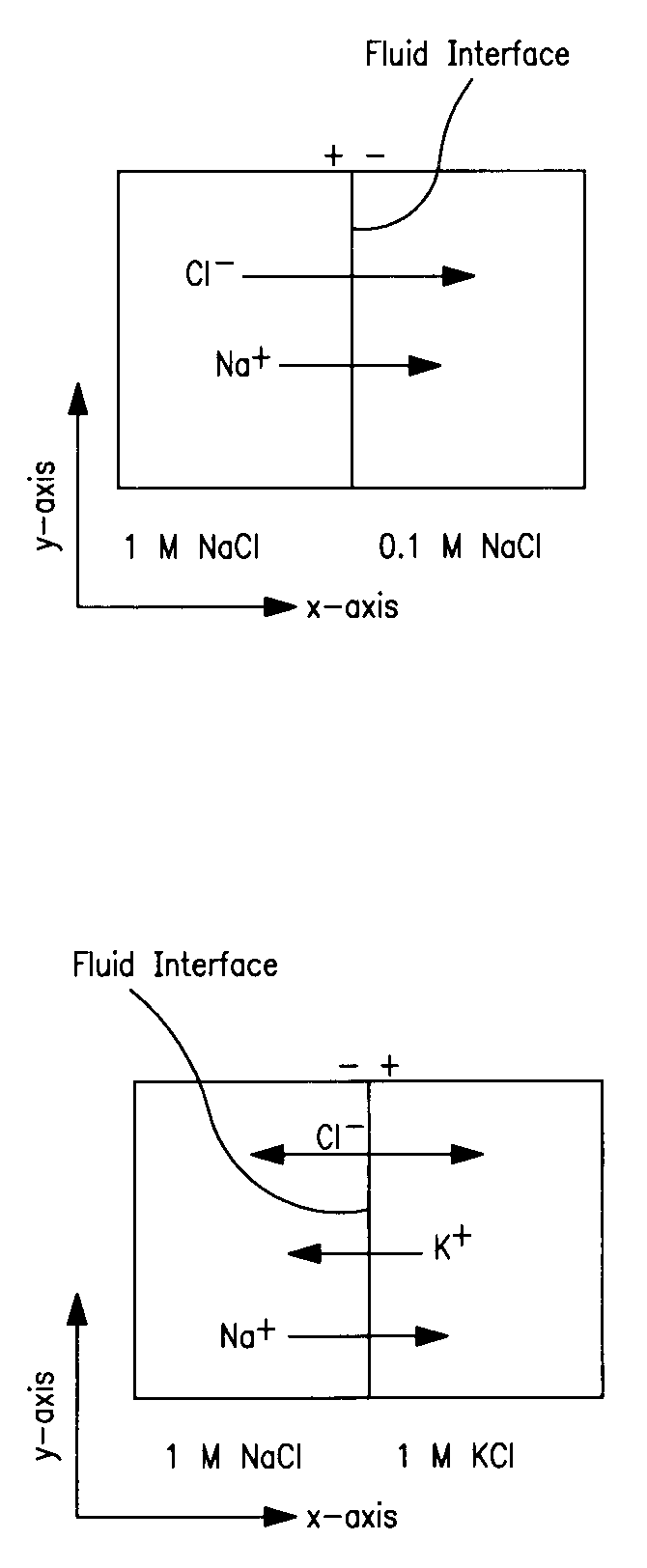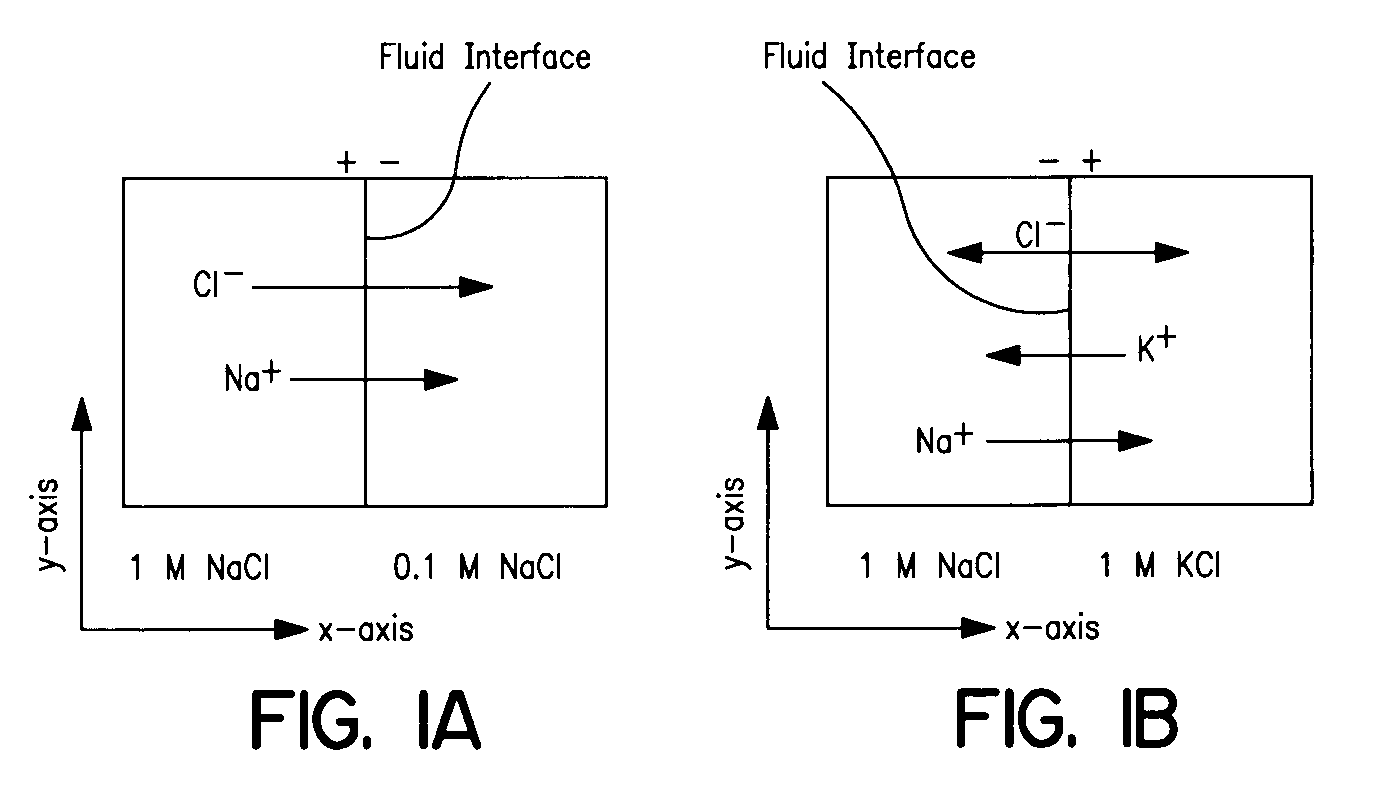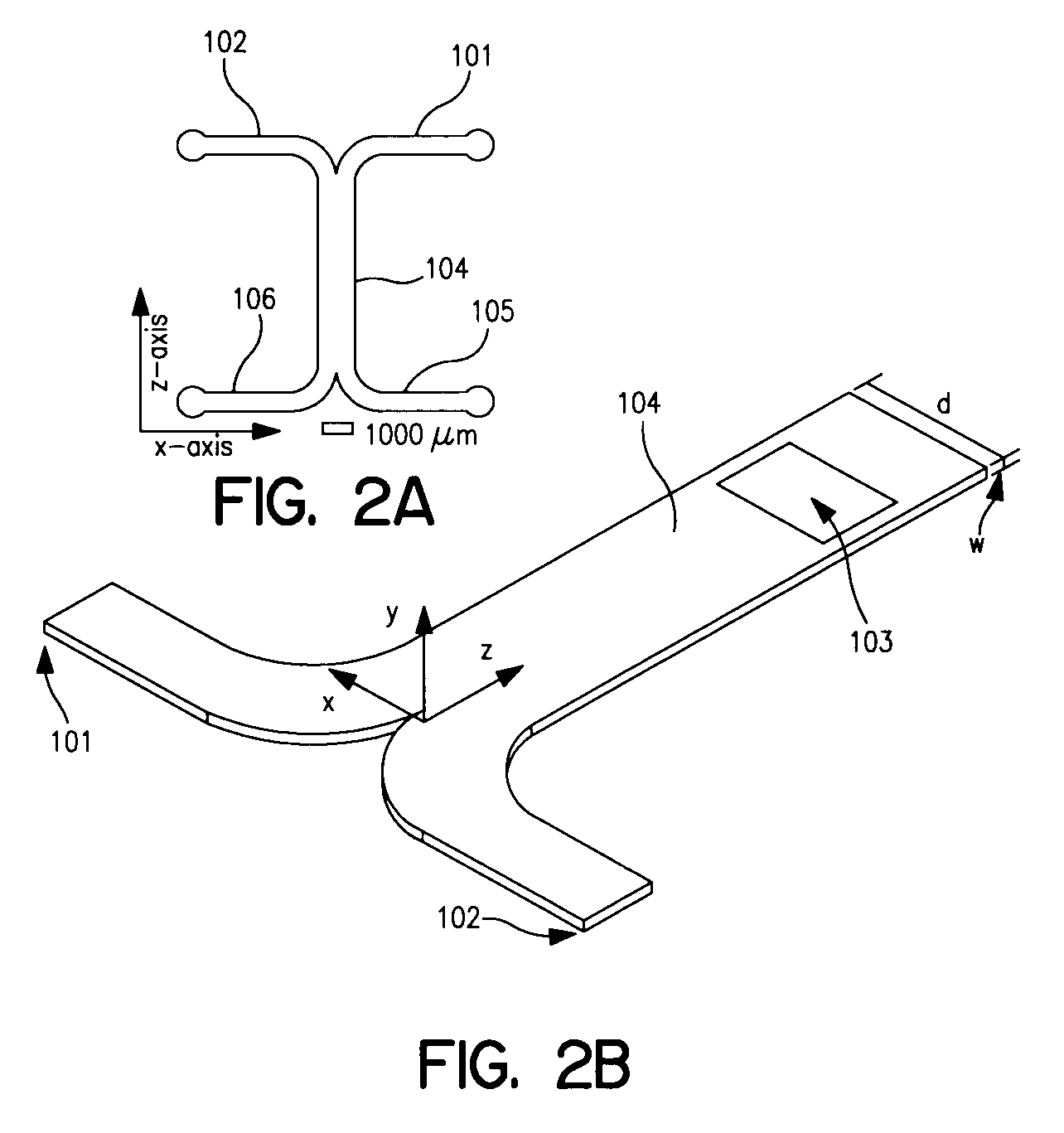Use of liquid junction potentials for electrophoresis without applied voltage in a microfluidic channel
a microfluidic channel and electrophoresis technology, applied in flow mixers, electrolysis, diaphragms, etc., can solve the problems of microfluidic devices, microfluidic electrophoresis adds complexity to the design, and significant problems in many microfluidic systems
- Summary
- Abstract
- Description
- Claims
- Application Information
AI Technical Summary
Benefits of technology
Problems solved by technology
Method used
Image
Examples
control example 1
[0215]Experiment 1 (conditions shown in Table 1) served as a control for the rest of the experiments; it represents the case where no LJP was formed because the ionic compositions of the fluid pairs were balanced. In this case it was expected and observed that diffusion was the only mechanism of transverse mass transport. The results from the diffusion experiment are shown in FIG. 9. Addition of either 1 M NaCl or 1 M Na2SO4 to both streams produced results that were indistinguishable from the control.
[0216]As the residence time increased, the extent of interdiffusion increased, as expected; slope of the concentration profile at the midline of the channel are less steep. It is interesting to note that at the midline, the concentration rapidly reached the equilibrium concentration, and then remained fixed. Thus, the concentration profiles appeared to ‘pivot’ about this point with increasing residence time. These results are in good agreement with other experiments that ...
example 2
Accelerating Mass Transport Using LJP
[0217]In Experiment 2, the unlabeled solution contained a high concentration of NaCl and the labeled solution contained no NaCl. It was expected that this would generate a LJP because the diffusivity of Na+ (1.33×10−5 cm2 / sec) is 45% slower than that of Cl− (2.03×10−5 cm2 / sec) (Lide, D. R., CRC Handbook of Chemistry and Physics, 75th ed.; CRC Press, Cleveland, Ohio, 1995). Based on the model prediction of the field (FIG. 10) and potential (FIG. 11), we expected that negatively-charged fluorescein would experience an electrophoretic force acting in the same direction as the diffusive transport, thereby accelerating its net flux across the midline. The resulting concentration profiles from this experiment are shown in FIG. 12, which show a depletion of the fluorescein in a region of the labeled solution near the interface; there was a ‘dip’ in the normalized intensity profile. This dip is caused by the electrophoretic migration of dye near the inte...
example 3
Decelerating Mass Transport Using LJP
[0219]In Experiment 3, the unlabeled solution contained a high concentration of Na2SO4 and the labeled solution contained none. A LJP was predicted in this case because Na+ (1.33×10−5 cm2 / sec) diffuses 23% faster than SO4−2 (1.03×10−5 cm2 / sec) (Lide, D. R., CRC Handbook of Chemistry and Physics, 75th ed.; CRC Press, Cleveland, Ohio:, 1995). In this experiment the anionic species diffused faster than the cationic species, which was the opposite of Experiment 2. Therefore, the sign of the electric field generated in this case was anticipated to be opposite to that of the Experiment 2. In this case we expected that the fluorescein transport across the channel would be decelerated by the LJP, resulting in a concentration of the fluorescein in its solution of origin. The experimental concentration profiles are shown in FIG. 14. These concentration profiles show that there was electrophoretic transport of the tracer molecule in the opposite direction o...
PUM
| Property | Measurement | Unit |
|---|---|---|
| residence time | aaaaa | aaaaa |
| molecular weight | aaaaa | aaaaa |
| length scale | aaaaa | aaaaa |
Abstract
Description
Claims
Application Information
 Login to View More
Login to View More - R&D
- Intellectual Property
- Life Sciences
- Materials
- Tech Scout
- Unparalleled Data Quality
- Higher Quality Content
- 60% Fewer Hallucinations
Browse by: Latest US Patents, China's latest patents, Technical Efficacy Thesaurus, Application Domain, Technology Topic, Popular Technical Reports.
© 2025 PatSnap. All rights reserved.Legal|Privacy policy|Modern Slavery Act Transparency Statement|Sitemap|About US| Contact US: help@patsnap.com



